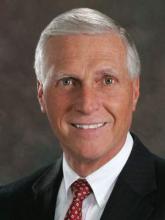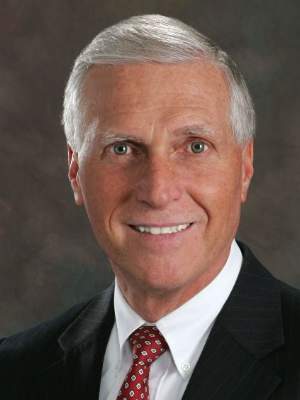User login
Last-minute ICD-10 help for docs who are lagging
As the calendar winds down toward the Oct. 1 compliance date for ICD-10, be aware of options that can help medical practices meet requirements while systems are being upgraded.
[Physicians and their staffs] “may not have everything they need to do in the office all prepared and installed, but if they take advantage of other methods for billing under ICD-10, like free software that might be available from the government or from clearinghouses or using payer portals to enter claims” they should be able to get by, Jim Daley, director of IT for Blue Cross Blue Shield of South Carolina, said in an interview. “They can still use ICD-10 on the compliance date, even though it may not be ideal.”
Mr. Daley, who also is a past chair of the Workgroup for Electronic Data Interchange (WEDI), outlined a number of resources to help with the transition, even as the deadline is fast approaching.
“In particular, the CMS Road to 10 website is outstanding,” Mr. Daley said. “It may be overwhelming at times, but there are some very nice summaries out there.”
The Centers for Medicare & Medicaid Services also posted to its website a series of specialty-specific guides to help with the transition.
“Also, WEDI has some great resources for physicians to view,” Mr. Daley continued, stressing that physicians need to be updating office software to make sure it supports ICD-10.
He suggested working with training partners and clearinghouses, who also might have resources to help with the transition. “Use those resources that are available, and also don’t delay. There’s still time, although it’s getting short. There is a lot to do.”
Finally, he stressed that more detailed clinical documentation will be key to a smooth transition. “Understand enough about what’s required for ICD-10 to create good clinical documentation. Concepts such as left side or right side are very basic, but if that’s in your documentation, it makes it much easier to code them through ICD-10,” Mr. Daley said.
He continued, “If you are documenting the exact conditions and the exact processes that you performed when you saw the patient, which you should be doing anyway, then it should be much easier to pick the correct code. They are not as general as before. They are very specific. So if you have those details in your documentation, it will drive you down to picking the correct codes.”
As the calendar winds down toward the Oct. 1 compliance date for ICD-10, be aware of options that can help medical practices meet requirements while systems are being upgraded.
[Physicians and their staffs] “may not have everything they need to do in the office all prepared and installed, but if they take advantage of other methods for billing under ICD-10, like free software that might be available from the government or from clearinghouses or using payer portals to enter claims” they should be able to get by, Jim Daley, director of IT for Blue Cross Blue Shield of South Carolina, said in an interview. “They can still use ICD-10 on the compliance date, even though it may not be ideal.”
Mr. Daley, who also is a past chair of the Workgroup for Electronic Data Interchange (WEDI), outlined a number of resources to help with the transition, even as the deadline is fast approaching.
“In particular, the CMS Road to 10 website is outstanding,” Mr. Daley said. “It may be overwhelming at times, but there are some very nice summaries out there.”
The Centers for Medicare & Medicaid Services also posted to its website a series of specialty-specific guides to help with the transition.
“Also, WEDI has some great resources for physicians to view,” Mr. Daley continued, stressing that physicians need to be updating office software to make sure it supports ICD-10.
He suggested working with training partners and clearinghouses, who also might have resources to help with the transition. “Use those resources that are available, and also don’t delay. There’s still time, although it’s getting short. There is a lot to do.”
Finally, he stressed that more detailed clinical documentation will be key to a smooth transition. “Understand enough about what’s required for ICD-10 to create good clinical documentation. Concepts such as left side or right side are very basic, but if that’s in your documentation, it makes it much easier to code them through ICD-10,” Mr. Daley said.
He continued, “If you are documenting the exact conditions and the exact processes that you performed when you saw the patient, which you should be doing anyway, then it should be much easier to pick the correct code. They are not as general as before. They are very specific. So if you have those details in your documentation, it will drive you down to picking the correct codes.”
As the calendar winds down toward the Oct. 1 compliance date for ICD-10, be aware of options that can help medical practices meet requirements while systems are being upgraded.
[Physicians and their staffs] “may not have everything they need to do in the office all prepared and installed, but if they take advantage of other methods for billing under ICD-10, like free software that might be available from the government or from clearinghouses or using payer portals to enter claims” they should be able to get by, Jim Daley, director of IT for Blue Cross Blue Shield of South Carolina, said in an interview. “They can still use ICD-10 on the compliance date, even though it may not be ideal.”
Mr. Daley, who also is a past chair of the Workgroup for Electronic Data Interchange (WEDI), outlined a number of resources to help with the transition, even as the deadline is fast approaching.
“In particular, the CMS Road to 10 website is outstanding,” Mr. Daley said. “It may be overwhelming at times, but there are some very nice summaries out there.”
The Centers for Medicare & Medicaid Services also posted to its website a series of specialty-specific guides to help with the transition.
“Also, WEDI has some great resources for physicians to view,” Mr. Daley continued, stressing that physicians need to be updating office software to make sure it supports ICD-10.
He suggested working with training partners and clearinghouses, who also might have resources to help with the transition. “Use those resources that are available, and also don’t delay. There’s still time, although it’s getting short. There is a lot to do.”
Finally, he stressed that more detailed clinical documentation will be key to a smooth transition. “Understand enough about what’s required for ICD-10 to create good clinical documentation. Concepts such as left side or right side are very basic, but if that’s in your documentation, it makes it much easier to code them through ICD-10,” Mr. Daley said.
He continued, “If you are documenting the exact conditions and the exact processes that you performed when you saw the patient, which you should be doing anyway, then it should be much easier to pick the correct code. They are not as general as before. They are very specific. So if you have those details in your documentation, it will drive you down to picking the correct codes.”
CMS releases specialty-specific ICD-10 transition guides
The Centers for Medicare & Medicaid Services is offering a number of specialty-specific guidebooks to help with the transition to ICD-10.
“To help physicians and other providers get quickly up to speed, CMS has launched the ICD-10 Clinical Concepts Series for specialties,” according to a post on the agency’s ICD-10 news website. “Each guide in the series compiles key information from the Road to 10 online tool in a PDF format that can be readily shared, emailed, posted to websites, and printed. The guides include common ICD-10 codes, clinical documentation tips, clinical scenarios, and links to Road to 10.”
The specialty guidebooks include: family practice, internal medicine, cardiology, ob.gyn., orthopedics, and pediatrics.
Road to 10 includes tools to help build an ICD-10 action plan, interactive case studies to see how your coding selections compare with those of other physicians, quick reference documents, and an archive of webcasts created by and for medical professionals.
All health care professionals must start using ICD-10 on Oct. 1; however, the CMS has announced a 1-year transition period to help ensure physicians and other providers continue to get paid as they begin filing claims using the new code set.
The Centers for Medicare & Medicaid Services is offering a number of specialty-specific guidebooks to help with the transition to ICD-10.
“To help physicians and other providers get quickly up to speed, CMS has launched the ICD-10 Clinical Concepts Series for specialties,” according to a post on the agency’s ICD-10 news website. “Each guide in the series compiles key information from the Road to 10 online tool in a PDF format that can be readily shared, emailed, posted to websites, and printed. The guides include common ICD-10 codes, clinical documentation tips, clinical scenarios, and links to Road to 10.”
The specialty guidebooks include: family practice, internal medicine, cardiology, ob.gyn., orthopedics, and pediatrics.
Road to 10 includes tools to help build an ICD-10 action plan, interactive case studies to see how your coding selections compare with those of other physicians, quick reference documents, and an archive of webcasts created by and for medical professionals.
All health care professionals must start using ICD-10 on Oct. 1; however, the CMS has announced a 1-year transition period to help ensure physicians and other providers continue to get paid as they begin filing claims using the new code set.
The Centers for Medicare & Medicaid Services is offering a number of specialty-specific guidebooks to help with the transition to ICD-10.
“To help physicians and other providers get quickly up to speed, CMS has launched the ICD-10 Clinical Concepts Series for specialties,” according to a post on the agency’s ICD-10 news website. “Each guide in the series compiles key information from the Road to 10 online tool in a PDF format that can be readily shared, emailed, posted to websites, and printed. The guides include common ICD-10 codes, clinical documentation tips, clinical scenarios, and links to Road to 10.”
The specialty guidebooks include: family practice, internal medicine, cardiology, ob.gyn., orthopedics, and pediatrics.
Road to 10 includes tools to help build an ICD-10 action plan, interactive case studies to see how your coding selections compare with those of other physicians, quick reference documents, and an archive of webcasts created by and for medical professionals.
All health care professionals must start using ICD-10 on Oct. 1; however, the CMS has announced a 1-year transition period to help ensure physicians and other providers continue to get paid as they begin filing claims using the new code set.
Most docs still not ready for ICD-10 switch
A majority of physician practices will not be ready when the ICD-10 compliance date rolls around on Oct. 1, according to a recent survey by the Workgroup for Electronic Data Interchange (WEDI).
Less than half of physician practices reported that they were ready, or would be ready to implement ICD-10 by the compliance date. Nearly one-quarter of practices indicated they would not be ready, with the balance identifying their readiness status as “unknown.”
The WEDI survey was conducted in June, prior to the Centers for Medicare & Medicaid Services’ announcing a 1-year transition period during which Medicare will not deny claims based solely on the specificity of diagnosis codes, provided they are in the appropriate family of ICD-10 codes.
Physician practices “may now be working more quickly toward compliance, since the potential for further delay has been removed,” WEDI wrote in a letter to Health and Human Services Secretary Sylvia Burwell.
WEDI, formed in 1991 by the HHS and named as an advisory organization to the agency under HIPAA, warned that if physician practices in particular “do not make a dedicated and aggressive effort to complete their implementation activities in the time remaining, there is likely to be disruption to industry claims processing on Oct. 1, 2015.”
Physician practices may have a lot of catching up to do in a short amount of time because of inaction taken with each delayed implementation date. Many organizations “did not take full advantage of this additional time and as indicated in prior surveys, many organizations stopped or slowed down efforts when a delay was announced,” WEDI noted.
In a separate letter, WEDI called for more transparency regarding the readiness of state Medicaid agencies to convert to ICD-10, and urged the HHS to appoint an ombudsman for ICD-10 as soon as possible.
A majority of physician practices will not be ready when the ICD-10 compliance date rolls around on Oct. 1, according to a recent survey by the Workgroup for Electronic Data Interchange (WEDI).
Less than half of physician practices reported that they were ready, or would be ready to implement ICD-10 by the compliance date. Nearly one-quarter of practices indicated they would not be ready, with the balance identifying their readiness status as “unknown.”
The WEDI survey was conducted in June, prior to the Centers for Medicare & Medicaid Services’ announcing a 1-year transition period during which Medicare will not deny claims based solely on the specificity of diagnosis codes, provided they are in the appropriate family of ICD-10 codes.
Physician practices “may now be working more quickly toward compliance, since the potential for further delay has been removed,” WEDI wrote in a letter to Health and Human Services Secretary Sylvia Burwell.
WEDI, formed in 1991 by the HHS and named as an advisory organization to the agency under HIPAA, warned that if physician practices in particular “do not make a dedicated and aggressive effort to complete their implementation activities in the time remaining, there is likely to be disruption to industry claims processing on Oct. 1, 2015.”
Physician practices may have a lot of catching up to do in a short amount of time because of inaction taken with each delayed implementation date. Many organizations “did not take full advantage of this additional time and as indicated in prior surveys, many organizations stopped or slowed down efforts when a delay was announced,” WEDI noted.
In a separate letter, WEDI called for more transparency regarding the readiness of state Medicaid agencies to convert to ICD-10, and urged the HHS to appoint an ombudsman for ICD-10 as soon as possible.
A majority of physician practices will not be ready when the ICD-10 compliance date rolls around on Oct. 1, according to a recent survey by the Workgroup for Electronic Data Interchange (WEDI).
Less than half of physician practices reported that they were ready, or would be ready to implement ICD-10 by the compliance date. Nearly one-quarter of practices indicated they would not be ready, with the balance identifying their readiness status as “unknown.”
The WEDI survey was conducted in June, prior to the Centers for Medicare & Medicaid Services’ announcing a 1-year transition period during which Medicare will not deny claims based solely on the specificity of diagnosis codes, provided they are in the appropriate family of ICD-10 codes.
Physician practices “may now be working more quickly toward compliance, since the potential for further delay has been removed,” WEDI wrote in a letter to Health and Human Services Secretary Sylvia Burwell.
WEDI, formed in 1991 by the HHS and named as an advisory organization to the agency under HIPAA, warned that if physician practices in particular “do not make a dedicated and aggressive effort to complete their implementation activities in the time remaining, there is likely to be disruption to industry claims processing on Oct. 1, 2015.”
Physician practices may have a lot of catching up to do in a short amount of time because of inaction taken with each delayed implementation date. Many organizations “did not take full advantage of this additional time and as indicated in prior surveys, many organizations stopped or slowed down efforts when a delay was announced,” WEDI noted.
In a separate letter, WEDI called for more transparency regarding the readiness of state Medicaid agencies to convert to ICD-10, and urged the HHS to appoint an ombudsman for ICD-10 as soon as possible.
CMS releases ICD-10-CM valid codes and code titles
The Centers for Medicare & Medicaid Services has released a complete list of the 2016 ICD-10-CM valid codes and code titles in a downloadable file.
The file can be used by physicians and their staffs to make sure “they are reporting all characters in a valid ICD-10-CM code,” CMS officials said.
“This list should assist providers who are unsure if additional characters are needed, such as the addition of a 7th character in order to arrive at a valid code.”
The file is available for download on the 2016 ICD-10-CM and GEMs website. It also features the 2016 ICD-10-PCS valid codes and code titles.
The Centers for Medicare & Medicaid Services has released a complete list of the 2016 ICD-10-CM valid codes and code titles in a downloadable file.
The file can be used by physicians and their staffs to make sure “they are reporting all characters in a valid ICD-10-CM code,” CMS officials said.
“This list should assist providers who are unsure if additional characters are needed, such as the addition of a 7th character in order to arrive at a valid code.”
The file is available for download on the 2016 ICD-10-CM and GEMs website. It also features the 2016 ICD-10-PCS valid codes and code titles.
The Centers for Medicare & Medicaid Services has released a complete list of the 2016 ICD-10-CM valid codes and code titles in a downloadable file.
The file can be used by physicians and their staffs to make sure “they are reporting all characters in a valid ICD-10-CM code,” CMS officials said.
“This list should assist providers who are unsure if additional characters are needed, such as the addition of a 7th character in order to arrive at a valid code.”
The file is available for download on the 2016 ICD-10-CM and GEMs website. It also features the 2016 ICD-10-PCS valid codes and code titles.
Doctors Doubt Quality Metrics Improve Quality of Care
Quality measures may be essential to creating health care systems focused on value over volume, but physicians aren’t convinced that current quality metrics are improving outcomes.
In addition, “physicians’ views tilt negative on the effect ACOs [accountable care organizations] have had on the quality of care, and many are still not sure of their effect,” according to a report by the Commonwealth Fund and the Kaiser Family Foundation.
The organizations surveyed 1,624 physicians and 535 other primary care providers, including nurse practitioners and physician assistants.
A total of 55% of physicians reported receiving payments or incentives based on quality or utilization. Nearly two-thirds of physicians said they received salaries or capitation, while 34% of physicians were fee-for-service only. And 29% of physicians were part of an ACO, while 9% were preparing to join one.
Overall, clinicians “were more negative about the use of quality metrics to assess their performance, even those providers who receive incentive payments based on quality,” according to the report. In addition, recent health care trends are causing nearly half of physicians (47%) to consider early retirement.
Half of all surveyed physicians responded negatively when asked if they thought “the increased use of quality metrics to assess provider performance is having a positive, negative, or no impact on primary care providers’ ability to provide quality care to their patients.”
That 50% negative rate was consistent among physicians who have received incentive payments based on quality of care and those who have not. Overall, only 22% of physicians said it was having a positive effect. That number increased to 28% among those who have received incentive payments and dropped to 17% among those who have not.
A total of 38% of physicians were unsure if they thought the increased use of accountable care organizations “is having a positive, negative, or no impact on primary care providers’ ability to provide quality care to their patients,” while 26% said ACOs are having a negative impact, and only 14% said the effect was positive.
For those clinicians in ACOs, 25% were unsure of ACOs’ impact, while 24% said it was negative, and 30% said it was positive. Among physicians not in ACOs, 43% were unsure of ACOs’ impact, 27% said ACOs were having a negative impact, and 7% said the impact was positive. About 20% of survey respondents said there was no impact, a number that was consistent among physicians in and not in ACOs.
“I am not surprised by these data,” said Dr. William Golden, professor of medicine and public health at the University of Arkansas for Medical Sciences, Little Rock.
“The implementation of quality measurements and performance incentives has often been awkward and ineffective,” added Dr. Golden, who also serves as medical director for Arkansas Medicaid. “Too many incentives use burdensome, unreliable metrics with clumsy rewards. The current situation reflects poor program design and not the failure of quality measurement as a concept.”
Quality measures may be essential to creating health care systems focused on value over volume, but physicians aren’t convinced that current quality metrics are improving outcomes.
In addition, “physicians’ views tilt negative on the effect ACOs [accountable care organizations] have had on the quality of care, and many are still not sure of their effect,” according to a report by the Commonwealth Fund and the Kaiser Family Foundation.
The organizations surveyed 1,624 physicians and 535 other primary care providers, including nurse practitioners and physician assistants.
A total of 55% of physicians reported receiving payments or incentives based on quality or utilization. Nearly two-thirds of physicians said they received salaries or capitation, while 34% of physicians were fee-for-service only. And 29% of physicians were part of an ACO, while 9% were preparing to join one.
Overall, clinicians “were more negative about the use of quality metrics to assess their performance, even those providers who receive incentive payments based on quality,” according to the report. In addition, recent health care trends are causing nearly half of physicians (47%) to consider early retirement.
Half of all surveyed physicians responded negatively when asked if they thought “the increased use of quality metrics to assess provider performance is having a positive, negative, or no impact on primary care providers’ ability to provide quality care to their patients.”
That 50% negative rate was consistent among physicians who have received incentive payments based on quality of care and those who have not. Overall, only 22% of physicians said it was having a positive effect. That number increased to 28% among those who have received incentive payments and dropped to 17% among those who have not.
A total of 38% of physicians were unsure if they thought the increased use of accountable care organizations “is having a positive, negative, or no impact on primary care providers’ ability to provide quality care to their patients,” while 26% said ACOs are having a negative impact, and only 14% said the effect was positive.
For those clinicians in ACOs, 25% were unsure of ACOs’ impact, while 24% said it was negative, and 30% said it was positive. Among physicians not in ACOs, 43% were unsure of ACOs’ impact, 27% said ACOs were having a negative impact, and 7% said the impact was positive. About 20% of survey respondents said there was no impact, a number that was consistent among physicians in and not in ACOs.
“I am not surprised by these data,” said Dr. William Golden, professor of medicine and public health at the University of Arkansas for Medical Sciences, Little Rock.
“The implementation of quality measurements and performance incentives has often been awkward and ineffective,” added Dr. Golden, who also serves as medical director for Arkansas Medicaid. “Too many incentives use burdensome, unreliable metrics with clumsy rewards. The current situation reflects poor program design and not the failure of quality measurement as a concept.”
Quality measures may be essential to creating health care systems focused on value over volume, but physicians aren’t convinced that current quality metrics are improving outcomes.
In addition, “physicians’ views tilt negative on the effect ACOs [accountable care organizations] have had on the quality of care, and many are still not sure of their effect,” according to a report by the Commonwealth Fund and the Kaiser Family Foundation.
The organizations surveyed 1,624 physicians and 535 other primary care providers, including nurse practitioners and physician assistants.
A total of 55% of physicians reported receiving payments or incentives based on quality or utilization. Nearly two-thirds of physicians said they received salaries or capitation, while 34% of physicians were fee-for-service only. And 29% of physicians were part of an ACO, while 9% were preparing to join one.
Overall, clinicians “were more negative about the use of quality metrics to assess their performance, even those providers who receive incentive payments based on quality,” according to the report. In addition, recent health care trends are causing nearly half of physicians (47%) to consider early retirement.
Half of all surveyed physicians responded negatively when asked if they thought “the increased use of quality metrics to assess provider performance is having a positive, negative, or no impact on primary care providers’ ability to provide quality care to their patients.”
That 50% negative rate was consistent among physicians who have received incentive payments based on quality of care and those who have not. Overall, only 22% of physicians said it was having a positive effect. That number increased to 28% among those who have received incentive payments and dropped to 17% among those who have not.
A total of 38% of physicians were unsure if they thought the increased use of accountable care organizations “is having a positive, negative, or no impact on primary care providers’ ability to provide quality care to their patients,” while 26% said ACOs are having a negative impact, and only 14% said the effect was positive.
For those clinicians in ACOs, 25% were unsure of ACOs’ impact, while 24% said it was negative, and 30% said it was positive. Among physicians not in ACOs, 43% were unsure of ACOs’ impact, 27% said ACOs were having a negative impact, and 7% said the impact was positive. About 20% of survey respondents said there was no impact, a number that was consistent among physicians in and not in ACOs.
“I am not surprised by these data,” said Dr. William Golden, professor of medicine and public health at the University of Arkansas for Medical Sciences, Little Rock.
“The implementation of quality measurements and performance incentives has often been awkward and ineffective,” added Dr. Golden, who also serves as medical director for Arkansas Medicaid. “Too many incentives use burdensome, unreliable metrics with clumsy rewards. The current situation reflects poor program design and not the failure of quality measurement as a concept.”
Doctors doubt quality metrics improve quality of care
Quality measures may be essential to creating health care systems focused on value over volume, but physicians aren’t convinced that current quality metrics are improving outcomes.
In addition, “physicians’ views tilt negative on the effect ACOs [accountable care organizations] have had on the quality of care, and many are still not sure of their effect,” according to a report by the Commonwealth Fund and the Kaiser Family Foundation.
The organizations surveyed 1,624 physicians and 535 other primary care providers, including nurse practitioners and physician assistants.
A total of 55% of physicians reported receiving payments or incentives based on quality or utilization. Nearly two-thirds of physicians said they received salaries or capitation, while 34% of physicians were fee-for-service only. And 29% of physicians were part of an ACO, while 9% were preparing to join one.
Overall, clinicians “were more negative about the use of quality metrics to assess their performance, even those providers who receive incentive payments based on quality,” according to the report. In addition, recent health care trends are causing nearly half of physicians (47%) to consider early retirement.
Half of all surveyed physicians responded negatively when asked if they thought “the increased use of quality metrics to assess provider performance is having a positive, negative, or no impact on primary care providers’ ability to provide quality care to their patients.”
That 50% negative rate was consistent among physicians who have received incentive payments based on quality of care and those who have not. Overall, only 22% of physicians said it was having a positive effect. That number increased to 28% among those who have received incentive payments and dropped to 17% among those who have not.
A total of 38% of physicians were unsure if they thought the increased use of accountable care organizations “is having a positive, negative, or no impact on primary care providers’ ability to provide quality care to their patients,” while 26% said ACOs are having a negative impact, and only 14% said the effect was positive.
For those clinicians in ACOs, 25% were unsure of ACOs’ impact, while 24% said it was negative, and 30% said it was positive. Among physicians not in ACOs, 43% were unsure of ACOs’ impact, 27% said ACOs were having a negative impact, and 7% said the impact was positive. About 20% of survey respondents said there was no impact, a number that was consistent among physicians in and not in ACOs.
“I am not surprised by these data,” said Dr. William Golden, professor of medicine and public health at the University of Arkansas for Medical Sciences, Little Rock.
“The implementation of quality measurements and performance incentives has often been awkward and ineffective,” added Dr. Golden, who also serves as medical director for Arkansas Medicaid. “Too many incentives use burdensome, unreliable metrics with clumsy rewards. The current situation reflects poor program design and not the failure of quality measurement as a concept.”
Quality measures may be essential to creating health care systems focused on value over volume, but physicians aren’t convinced that current quality metrics are improving outcomes.
In addition, “physicians’ views tilt negative on the effect ACOs [accountable care organizations] have had on the quality of care, and many are still not sure of their effect,” according to a report by the Commonwealth Fund and the Kaiser Family Foundation.
The organizations surveyed 1,624 physicians and 535 other primary care providers, including nurse practitioners and physician assistants.
A total of 55% of physicians reported receiving payments or incentives based on quality or utilization. Nearly two-thirds of physicians said they received salaries or capitation, while 34% of physicians were fee-for-service only. And 29% of physicians were part of an ACO, while 9% were preparing to join one.
Overall, clinicians “were more negative about the use of quality metrics to assess their performance, even those providers who receive incentive payments based on quality,” according to the report. In addition, recent health care trends are causing nearly half of physicians (47%) to consider early retirement.
Half of all surveyed physicians responded negatively when asked if they thought “the increased use of quality metrics to assess provider performance is having a positive, negative, or no impact on primary care providers’ ability to provide quality care to their patients.”
That 50% negative rate was consistent among physicians who have received incentive payments based on quality of care and those who have not. Overall, only 22% of physicians said it was having a positive effect. That number increased to 28% among those who have received incentive payments and dropped to 17% among those who have not.
A total of 38% of physicians were unsure if they thought the increased use of accountable care organizations “is having a positive, negative, or no impact on primary care providers’ ability to provide quality care to their patients,” while 26% said ACOs are having a negative impact, and only 14% said the effect was positive.
For those clinicians in ACOs, 25% were unsure of ACOs’ impact, while 24% said it was negative, and 30% said it was positive. Among physicians not in ACOs, 43% were unsure of ACOs’ impact, 27% said ACOs were having a negative impact, and 7% said the impact was positive. About 20% of survey respondents said there was no impact, a number that was consistent among physicians in and not in ACOs.
“I am not surprised by these data,” said Dr. William Golden, professor of medicine and public health at the University of Arkansas for Medical Sciences, Little Rock.
“The implementation of quality measurements and performance incentives has often been awkward and ineffective,” added Dr. Golden, who also serves as medical director for Arkansas Medicaid. “Too many incentives use burdensome, unreliable metrics with clumsy rewards. The current situation reflects poor program design and not the failure of quality measurement as a concept.”
Quality measures may be essential to creating health care systems focused on value over volume, but physicians aren’t convinced that current quality metrics are improving outcomes.
In addition, “physicians’ views tilt negative on the effect ACOs [accountable care organizations] have had on the quality of care, and many are still not sure of their effect,” according to a report by the Commonwealth Fund and the Kaiser Family Foundation.
The organizations surveyed 1,624 physicians and 535 other primary care providers, including nurse practitioners and physician assistants.
A total of 55% of physicians reported receiving payments or incentives based on quality or utilization. Nearly two-thirds of physicians said they received salaries or capitation, while 34% of physicians were fee-for-service only. And 29% of physicians were part of an ACO, while 9% were preparing to join one.
Overall, clinicians “were more negative about the use of quality metrics to assess their performance, even those providers who receive incentive payments based on quality,” according to the report. In addition, recent health care trends are causing nearly half of physicians (47%) to consider early retirement.
Half of all surveyed physicians responded negatively when asked if they thought “the increased use of quality metrics to assess provider performance is having a positive, negative, or no impact on primary care providers’ ability to provide quality care to their patients.”
That 50% negative rate was consistent among physicians who have received incentive payments based on quality of care and those who have not. Overall, only 22% of physicians said it was having a positive effect. That number increased to 28% among those who have received incentive payments and dropped to 17% among those who have not.
A total of 38% of physicians were unsure if they thought the increased use of accountable care organizations “is having a positive, negative, or no impact on primary care providers’ ability to provide quality care to their patients,” while 26% said ACOs are having a negative impact, and only 14% said the effect was positive.
For those clinicians in ACOs, 25% were unsure of ACOs’ impact, while 24% said it was negative, and 30% said it was positive. Among physicians not in ACOs, 43% were unsure of ACOs’ impact, 27% said ACOs were having a negative impact, and 7% said the impact was positive. About 20% of survey respondents said there was no impact, a number that was consistent among physicians in and not in ACOs.
“I am not surprised by these data,” said Dr. William Golden, professor of medicine and public health at the University of Arkansas for Medical Sciences, Little Rock.
“The implementation of quality measurements and performance incentives has often been awkward and ineffective,” added Dr. Golden, who also serves as medical director for Arkansas Medicaid. “Too many incentives use burdensome, unreliable metrics with clumsy rewards. The current situation reflects poor program design and not the failure of quality measurement as a concept.”
Bill to overhaul mental health system introduced in Senate
A new bill aimed at making major changes to how mental health is treated in the United States was introduced Aug. 4 in the Senate.
Dubbed “The Mental Health Reform Act of 2015,” the bill aims to increase the resources available to treat mental illness, improve coordination of care, and encourage the development of solutions to help families dealing with mental illness.
The bill, introduced by Sen. Bill Cassidy (R-La.), a physician, and Sen. Chris Murphy (D-Conn.), would require states to identify barriers that prevent the integration of physical and mental health and provide up to $2 million in grants for 5 years to help eliminate those barriers. A grant program aimed at early intervention for children as young as 3 years old who show significant risk factors for mental illness would be developed under the legislation. Under that provision, pediatrician consultation with mental health teams would be supported, and Massachusetts and Connecticut would be used as models.
Other key research and grant programs, such as the Community Mental Health Block Grant program and state-based data collection, would be renewed under the bill, and funding for biomedical research on mental health would be increased.
On the policy side, the legislation would create an assistant secretary for mental health and substance abuse within the U.S. Department of Health & Human Services, develop a national mental health policy laboratory to fund innovation grants to identify new models of mental health care, and strengthen transparency and enforcement of mental health parity laws. It also would allow Medicare/Medicaid patients to use mental health services and primary care services at the same location on the same day.
“The nation’s mental health system needs reform and investment, and we applaud Senators Murphy and Cassidy for this comprehensive reform initiative,” Dr. Saul Levin, CEO and medical director of the American Psychiatric Association, said in a statement. “We will work with legislators on both sides of the aisle to accomplish mental health reform.”
In addition to APA, the measure has received endorsement from numerous mental health organizations, including the American Psychological Association, the National Alliance on Mental Illness, the National Association of State Mental Health Program Directors, the American Foundation for Suicide Prevention, and the National Association of Psychiatric Health Systems. Adventist HealthCare also has expressed its support of the measure.
The Senate bill follows a similar reform effort, the Helping Families in Mental Health Crisis Act (H.R. 2646), introduced in June in the House by Rep. Tim Murphy (R-Pa.).
A new bill aimed at making major changes to how mental health is treated in the United States was introduced Aug. 4 in the Senate.
Dubbed “The Mental Health Reform Act of 2015,” the bill aims to increase the resources available to treat mental illness, improve coordination of care, and encourage the development of solutions to help families dealing with mental illness.
The bill, introduced by Sen. Bill Cassidy (R-La.), a physician, and Sen. Chris Murphy (D-Conn.), would require states to identify barriers that prevent the integration of physical and mental health and provide up to $2 million in grants for 5 years to help eliminate those barriers. A grant program aimed at early intervention for children as young as 3 years old who show significant risk factors for mental illness would be developed under the legislation. Under that provision, pediatrician consultation with mental health teams would be supported, and Massachusetts and Connecticut would be used as models.
Other key research and grant programs, such as the Community Mental Health Block Grant program and state-based data collection, would be renewed under the bill, and funding for biomedical research on mental health would be increased.
On the policy side, the legislation would create an assistant secretary for mental health and substance abuse within the U.S. Department of Health & Human Services, develop a national mental health policy laboratory to fund innovation grants to identify new models of mental health care, and strengthen transparency and enforcement of mental health parity laws. It also would allow Medicare/Medicaid patients to use mental health services and primary care services at the same location on the same day.
“The nation’s mental health system needs reform and investment, and we applaud Senators Murphy and Cassidy for this comprehensive reform initiative,” Dr. Saul Levin, CEO and medical director of the American Psychiatric Association, said in a statement. “We will work with legislators on both sides of the aisle to accomplish mental health reform.”
In addition to APA, the measure has received endorsement from numerous mental health organizations, including the American Psychological Association, the National Alliance on Mental Illness, the National Association of State Mental Health Program Directors, the American Foundation for Suicide Prevention, and the National Association of Psychiatric Health Systems. Adventist HealthCare also has expressed its support of the measure.
The Senate bill follows a similar reform effort, the Helping Families in Mental Health Crisis Act (H.R. 2646), introduced in June in the House by Rep. Tim Murphy (R-Pa.).
A new bill aimed at making major changes to how mental health is treated in the United States was introduced Aug. 4 in the Senate.
Dubbed “The Mental Health Reform Act of 2015,” the bill aims to increase the resources available to treat mental illness, improve coordination of care, and encourage the development of solutions to help families dealing with mental illness.
The bill, introduced by Sen. Bill Cassidy (R-La.), a physician, and Sen. Chris Murphy (D-Conn.), would require states to identify barriers that prevent the integration of physical and mental health and provide up to $2 million in grants for 5 years to help eliminate those barriers. A grant program aimed at early intervention for children as young as 3 years old who show significant risk factors for mental illness would be developed under the legislation. Under that provision, pediatrician consultation with mental health teams would be supported, and Massachusetts and Connecticut would be used as models.
Other key research and grant programs, such as the Community Mental Health Block Grant program and state-based data collection, would be renewed under the bill, and funding for biomedical research on mental health would be increased.
On the policy side, the legislation would create an assistant secretary for mental health and substance abuse within the U.S. Department of Health & Human Services, develop a national mental health policy laboratory to fund innovation grants to identify new models of mental health care, and strengthen transparency and enforcement of mental health parity laws. It also would allow Medicare/Medicaid patients to use mental health services and primary care services at the same location on the same day.
“The nation’s mental health system needs reform and investment, and we applaud Senators Murphy and Cassidy for this comprehensive reform initiative,” Dr. Saul Levin, CEO and medical director of the American Psychiatric Association, said in a statement. “We will work with legislators on both sides of the aisle to accomplish mental health reform.”
In addition to APA, the measure has received endorsement from numerous mental health organizations, including the American Psychological Association, the National Alliance on Mental Illness, the National Association of State Mental Health Program Directors, the American Foundation for Suicide Prevention, and the National Association of Psychiatric Health Systems. Adventist HealthCare also has expressed its support of the measure.
The Senate bill follows a similar reform effort, the Helping Families in Mental Health Crisis Act (H.R. 2646), introduced in June in the House by Rep. Tim Murphy (R-Pa.).
Study questions whether MOC is worth the time
The cost of completing the American Board of Internal Medicine’s maintenance of certification program may be higher than previously thought, raising further questions about the value of the program.
New research puts the average physician cost for the 2015 version of the ABIM maintenance of certification (MOC) program at $23,607 over 10 years, with time costs accounting for 90%, according to an analysis published in the July 27 issue of Annals of Internal Medicine.
“The ABIM has previously suggested that participation in MOC will cost $200 to $400 per year; this is a substantial understatement precisely because it overlooks timecosts,” Dr. Alexander T. Sandhu of Stanford University, and colleagues, wrote. “Efforts to decrease the cost of MOC therefore should focus on reducing demands on physician time.”
Researchers determined that cumulatively, the 2015 MOC will cost $5.7 billion over 10 years, including $5.1 billion in time costs resulting from 32.7 million physician-hours spent on completion of MOC. Testing costs account for $561 million over the decade (Ann. Intern. Med. 2015 July 27 [doi: 10.7326/M15-1011]).
Costs vary significantly by subspecialty, according to the researchers, since subspecialtists may take additional certification exams and have greater time demands related to MOC. For instance, the researchers estimated the average 10-year costs for general internists to be $16,725, compared to $32,763 for general cardiologists and $19,074 for endocrinologists.
The constraints on time also have the potential to translate into issues for patients, including increased costs and access to care.
“Whether the costs of MOC ultimately will be borne by physicians or will be passed on to employers, payers or patients is uncertain,” the researchers wrote. “Furthermore, unless balanced by improved efficiency downstream, the increased demand on physician time in a period of anticipated workforce shortfalls may have a deleterious effect on access to care, particularly elective care.”
But Dr. Richard Baron, ABIM president and CEO, countered that the hours spent on MOC allow physicians to increase their knowledge and that they would likely be doing many of those activities anyway, including attending medical society meetings.
“I think most physicians think [spending time on knowledge growth is a] core part of what they do,” Dr. Baron said in an interview. “Whether there was an MOC program or there wasn’t an MOC program, I think most doctors would be spending a lot of time staying current with a rapidly changing profession.”
Dr. Wayne J. Riley, president of the American College of Physicians, sees the analysis differently.
“This underscores our view that MOC as currently constructed can be inordinately burdensome from a time and money perspective,” he said in an interview. ”It does indeed provide one way to quantify how much MOC-associated efforts can end up costing an internist and that a high degree of sensitivity is needed, in our view, and should be given to how to address concerns about the cost, time, and ultimate value of MOC.”
The researchers called for well-designed studies to examine the clinical benefits and economic implications of the 2015 MOC, especially in light of the increased number of Americans covered by insurance through the Affordable Care Act.
The study was funded in part by the University of California, San Francisco, and the Department of Veterans Affairs. The authors reported having no financial disclosures.
The cost of completing the American Board of Internal Medicine’s maintenance of certification program may be higher than previously thought, raising further questions about the value of the program.
New research puts the average physician cost for the 2015 version of the ABIM maintenance of certification (MOC) program at $23,607 over 10 years, with time costs accounting for 90%, according to an analysis published in the July 27 issue of Annals of Internal Medicine.
“The ABIM has previously suggested that participation in MOC will cost $200 to $400 per year; this is a substantial understatement precisely because it overlooks timecosts,” Dr. Alexander T. Sandhu of Stanford University, and colleagues, wrote. “Efforts to decrease the cost of MOC therefore should focus on reducing demands on physician time.”
Researchers determined that cumulatively, the 2015 MOC will cost $5.7 billion over 10 years, including $5.1 billion in time costs resulting from 32.7 million physician-hours spent on completion of MOC. Testing costs account for $561 million over the decade (Ann. Intern. Med. 2015 July 27 [doi: 10.7326/M15-1011]).
Costs vary significantly by subspecialty, according to the researchers, since subspecialtists may take additional certification exams and have greater time demands related to MOC. For instance, the researchers estimated the average 10-year costs for general internists to be $16,725, compared to $32,763 for general cardiologists and $19,074 for endocrinologists.
The constraints on time also have the potential to translate into issues for patients, including increased costs and access to care.
“Whether the costs of MOC ultimately will be borne by physicians or will be passed on to employers, payers or patients is uncertain,” the researchers wrote. “Furthermore, unless balanced by improved efficiency downstream, the increased demand on physician time in a period of anticipated workforce shortfalls may have a deleterious effect on access to care, particularly elective care.”
But Dr. Richard Baron, ABIM president and CEO, countered that the hours spent on MOC allow physicians to increase their knowledge and that they would likely be doing many of those activities anyway, including attending medical society meetings.
“I think most physicians think [spending time on knowledge growth is a] core part of what they do,” Dr. Baron said in an interview. “Whether there was an MOC program or there wasn’t an MOC program, I think most doctors would be spending a lot of time staying current with a rapidly changing profession.”
Dr. Wayne J. Riley, president of the American College of Physicians, sees the analysis differently.
“This underscores our view that MOC as currently constructed can be inordinately burdensome from a time and money perspective,” he said in an interview. ”It does indeed provide one way to quantify how much MOC-associated efforts can end up costing an internist and that a high degree of sensitivity is needed, in our view, and should be given to how to address concerns about the cost, time, and ultimate value of MOC.”
The researchers called for well-designed studies to examine the clinical benefits and economic implications of the 2015 MOC, especially in light of the increased number of Americans covered by insurance through the Affordable Care Act.
The study was funded in part by the University of California, San Francisco, and the Department of Veterans Affairs. The authors reported having no financial disclosures.
The cost of completing the American Board of Internal Medicine’s maintenance of certification program may be higher than previously thought, raising further questions about the value of the program.
New research puts the average physician cost for the 2015 version of the ABIM maintenance of certification (MOC) program at $23,607 over 10 years, with time costs accounting for 90%, according to an analysis published in the July 27 issue of Annals of Internal Medicine.
“The ABIM has previously suggested that participation in MOC will cost $200 to $400 per year; this is a substantial understatement precisely because it overlooks timecosts,” Dr. Alexander T. Sandhu of Stanford University, and colleagues, wrote. “Efforts to decrease the cost of MOC therefore should focus on reducing demands on physician time.”
Researchers determined that cumulatively, the 2015 MOC will cost $5.7 billion over 10 years, including $5.1 billion in time costs resulting from 32.7 million physician-hours spent on completion of MOC. Testing costs account for $561 million over the decade (Ann. Intern. Med. 2015 July 27 [doi: 10.7326/M15-1011]).
Costs vary significantly by subspecialty, according to the researchers, since subspecialtists may take additional certification exams and have greater time demands related to MOC. For instance, the researchers estimated the average 10-year costs for general internists to be $16,725, compared to $32,763 for general cardiologists and $19,074 for endocrinologists.
The constraints on time also have the potential to translate into issues for patients, including increased costs and access to care.
“Whether the costs of MOC ultimately will be borne by physicians or will be passed on to employers, payers or patients is uncertain,” the researchers wrote. “Furthermore, unless balanced by improved efficiency downstream, the increased demand on physician time in a period of anticipated workforce shortfalls may have a deleterious effect on access to care, particularly elective care.”
But Dr. Richard Baron, ABIM president and CEO, countered that the hours spent on MOC allow physicians to increase their knowledge and that they would likely be doing many of those activities anyway, including attending medical society meetings.
“I think most physicians think [spending time on knowledge growth is a] core part of what they do,” Dr. Baron said in an interview. “Whether there was an MOC program or there wasn’t an MOC program, I think most doctors would be spending a lot of time staying current with a rapidly changing profession.”
Dr. Wayne J. Riley, president of the American College of Physicians, sees the analysis differently.
“This underscores our view that MOC as currently constructed can be inordinately burdensome from a time and money perspective,” he said in an interview. ”It does indeed provide one way to quantify how much MOC-associated efforts can end up costing an internist and that a high degree of sensitivity is needed, in our view, and should be given to how to address concerns about the cost, time, and ultimate value of MOC.”
The researchers called for well-designed studies to examine the clinical benefits and economic implications of the 2015 MOC, especially in light of the increased number of Americans covered by insurance through the Affordable Care Act.
The study was funded in part by the University of California, San Francisco, and the Department of Veterans Affairs. The authors reported having no financial disclosures.
FROM ANNALS OF INTERNAL MEDICINE
Major finding: The average 10-year physician cost for completing the 2015 MOC is $23,607, with time accounting for 90% of the cost.
Data source: Decision analytic model examining published literature.
Disclosures: The study was funded in part by the University of California, San Francisco, and the Department of Veterans Affairs. The authors reported having no financial disclosures.
GI societies prepare to fight colonoscopy code cuts
Once again, gastroenterologists are preparing to challenge the Centers for Medicare & Medicaid Services (CMS) on proposed cuts to reimbursement for colonoscopies.
Included in the recent proposed update to the physician fee schedule are various payment cuts, including a 19% reduction in payments for colonoscopy with biopsy, a 12% reduction for colonoscopy with snare polypectomy, and an 11% reduction for colonoscopy with no other ancillary services.
“These reductions are based on flawed methodology,” said Dr. Rajeev Jain, AGAF, chief of gastroenterology at Presbyterian Hospital of Dallas and a member of the American Gastroenterological Association (AGA) governing board. “They did not use all the survey data that was provided by gastroenterologists and surgeons. Rather, they recommended a value for colonoscopy based on a bronchoscopy code that they believed was similar in terms of physician work and time.”
Dr. Jain noted that in 2014, the AGA, along with the American College of Gastroenterology (ACG) and the American Society for Gastrointestinal Endoscopy (ASGE), were able to convince the CMS to hold off putting the rate cuts into effect for the 2015 calendar year because there was a lack of transparency in the system that prevented the medical societies from properly responding to the rate cuts.
But the agency is again relying on a misapplication of the American Medical Association/Specialty Society Relative Value Scale Update Committee’s (RUC)’s already flawed recommendation.
CMS in 2012 identified colonoscopy, among other procedures, as being potentially misvalued. The AGA, ACG, and ASGE provided survey data and recommendations to support proper reimbursement, but they contend that the RUC ultimately rejected the survey data and compared colonoscopy to another specialty to determine the value, resulting in the payment cut recommendations. The RUC recently was criticized in a GAO report for its members having conflicts of interest that could affect how physician services are valued.
The cuts could lead to gastroenterologists putting limits on this procedure within their Medicare population or withdrawing from Medicare altogether, Dr. Jain said. The cuts could also lead to more procedures being conducted in the hospital outpatient setting, where Medicare pays more for the procedure than in ambulatory surgical centers, which he said can be more cost effective and more patient friendly.
Comments on the proposal are due to CMS by Sept. 8.
Once again, gastroenterologists are preparing to challenge the Centers for Medicare & Medicaid Services (CMS) on proposed cuts to reimbursement for colonoscopies.
Included in the recent proposed update to the physician fee schedule are various payment cuts, including a 19% reduction in payments for colonoscopy with biopsy, a 12% reduction for colonoscopy with snare polypectomy, and an 11% reduction for colonoscopy with no other ancillary services.
“These reductions are based on flawed methodology,” said Dr. Rajeev Jain, AGAF, chief of gastroenterology at Presbyterian Hospital of Dallas and a member of the American Gastroenterological Association (AGA) governing board. “They did not use all the survey data that was provided by gastroenterologists and surgeons. Rather, they recommended a value for colonoscopy based on a bronchoscopy code that they believed was similar in terms of physician work and time.”
Dr. Jain noted that in 2014, the AGA, along with the American College of Gastroenterology (ACG) and the American Society for Gastrointestinal Endoscopy (ASGE), were able to convince the CMS to hold off putting the rate cuts into effect for the 2015 calendar year because there was a lack of transparency in the system that prevented the medical societies from properly responding to the rate cuts.
But the agency is again relying on a misapplication of the American Medical Association/Specialty Society Relative Value Scale Update Committee’s (RUC)’s already flawed recommendation.
CMS in 2012 identified colonoscopy, among other procedures, as being potentially misvalued. The AGA, ACG, and ASGE provided survey data and recommendations to support proper reimbursement, but they contend that the RUC ultimately rejected the survey data and compared colonoscopy to another specialty to determine the value, resulting in the payment cut recommendations. The RUC recently was criticized in a GAO report for its members having conflicts of interest that could affect how physician services are valued.
The cuts could lead to gastroenterologists putting limits on this procedure within their Medicare population or withdrawing from Medicare altogether, Dr. Jain said. The cuts could also lead to more procedures being conducted in the hospital outpatient setting, where Medicare pays more for the procedure than in ambulatory surgical centers, which he said can be more cost effective and more patient friendly.
Comments on the proposal are due to CMS by Sept. 8.
Once again, gastroenterologists are preparing to challenge the Centers for Medicare & Medicaid Services (CMS) on proposed cuts to reimbursement for colonoscopies.
Included in the recent proposed update to the physician fee schedule are various payment cuts, including a 19% reduction in payments for colonoscopy with biopsy, a 12% reduction for colonoscopy with snare polypectomy, and an 11% reduction for colonoscopy with no other ancillary services.
“These reductions are based on flawed methodology,” said Dr. Rajeev Jain, AGAF, chief of gastroenterology at Presbyterian Hospital of Dallas and a member of the American Gastroenterological Association (AGA) governing board. “They did not use all the survey data that was provided by gastroenterologists and surgeons. Rather, they recommended a value for colonoscopy based on a bronchoscopy code that they believed was similar in terms of physician work and time.”
Dr. Jain noted that in 2014, the AGA, along with the American College of Gastroenterology (ACG) and the American Society for Gastrointestinal Endoscopy (ASGE), were able to convince the CMS to hold off putting the rate cuts into effect for the 2015 calendar year because there was a lack of transparency in the system that prevented the medical societies from properly responding to the rate cuts.
But the agency is again relying on a misapplication of the American Medical Association/Specialty Society Relative Value Scale Update Committee’s (RUC)’s already flawed recommendation.
CMS in 2012 identified colonoscopy, among other procedures, as being potentially misvalued. The AGA, ACG, and ASGE provided survey data and recommendations to support proper reimbursement, but they contend that the RUC ultimately rejected the survey data and compared colonoscopy to another specialty to determine the value, resulting in the payment cut recommendations. The RUC recently was criticized in a GAO report for its members having conflicts of interest that could affect how physician services are valued.
The cuts could lead to gastroenterologists putting limits on this procedure within their Medicare population or withdrawing from Medicare altogether, Dr. Jain said. The cuts could also lead to more procedures being conducted in the hospital outpatient setting, where Medicare pays more for the procedure than in ambulatory surgical centers, which he said can be more cost effective and more patient friendly.
Comments on the proposal are due to CMS by Sept. 8.
First-time youth tobacco users turning to e-cigarettes
First-time youth tobacco users are turning to e-cigarettes, a survey showed.
Researchers examining the results of the survey of 2,084 11th- and 12th-grade participants in the Southern California Children’s Health Study during the spring of 2014 found that e-cigarettes were enjoying a “favorable social environment” among this group.
“This finding is a cause for concern because e-cigarettes were the dominant tobacco product used, and a substantial portion of e-cigarette users had no history of tobacco use,” Jessica L. Barrington-Trimis, Ph.D., a researcher at the University of Southern California’s department of preventive medicine, and her colleagues said in the August issue of Pediatrics (doi:10.1542/peds.2015-0639).
Twenty-four percent of teens reported any lifetime e-cigarette use; 10% were current users (past 30 days) and 14% were past users. “Notably, a lower proportion of adolescents (n = 390, 18.7%) had ever smoked a cigarette; 5.7% (n = 119) were current cigarette users and 10.0% (n = 271) were past cigarette smokers,” Dr. Barrington-Trimis and her associates reported.
The investigators suggested that because of a more favorable perception of e-cigarettes (for example, 43% of the adolescents predicted that their friends would react positively to their own e-cigarette use), they “could contribute to the ‘renormalization’ of tobacco products generally,” and called for more research in this area.
Research was funded by a grant from the National Cancer Institute and the Food and Drug Administration Center for Tobacco Products. The authors reported no relevant financial conflicts of interest.
First-time youth tobacco users are turning to e-cigarettes, a survey showed.
Researchers examining the results of the survey of 2,084 11th- and 12th-grade participants in the Southern California Children’s Health Study during the spring of 2014 found that e-cigarettes were enjoying a “favorable social environment” among this group.
“This finding is a cause for concern because e-cigarettes were the dominant tobacco product used, and a substantial portion of e-cigarette users had no history of tobacco use,” Jessica L. Barrington-Trimis, Ph.D., a researcher at the University of Southern California’s department of preventive medicine, and her colleagues said in the August issue of Pediatrics (doi:10.1542/peds.2015-0639).
Twenty-four percent of teens reported any lifetime e-cigarette use; 10% were current users (past 30 days) and 14% were past users. “Notably, a lower proportion of adolescents (n = 390, 18.7%) had ever smoked a cigarette; 5.7% (n = 119) were current cigarette users and 10.0% (n = 271) were past cigarette smokers,” Dr. Barrington-Trimis and her associates reported.
The investigators suggested that because of a more favorable perception of e-cigarettes (for example, 43% of the adolescents predicted that their friends would react positively to their own e-cigarette use), they “could contribute to the ‘renormalization’ of tobacco products generally,” and called for more research in this area.
Research was funded by a grant from the National Cancer Institute and the Food and Drug Administration Center for Tobacco Products. The authors reported no relevant financial conflicts of interest.
First-time youth tobacco users are turning to e-cigarettes, a survey showed.
Researchers examining the results of the survey of 2,084 11th- and 12th-grade participants in the Southern California Children’s Health Study during the spring of 2014 found that e-cigarettes were enjoying a “favorable social environment” among this group.
“This finding is a cause for concern because e-cigarettes were the dominant tobacco product used, and a substantial portion of e-cigarette users had no history of tobacco use,” Jessica L. Barrington-Trimis, Ph.D., a researcher at the University of Southern California’s department of preventive medicine, and her colleagues said in the August issue of Pediatrics (doi:10.1542/peds.2015-0639).
Twenty-four percent of teens reported any lifetime e-cigarette use; 10% were current users (past 30 days) and 14% were past users. “Notably, a lower proportion of adolescents (n = 390, 18.7%) had ever smoked a cigarette; 5.7% (n = 119) were current cigarette users and 10.0% (n = 271) were past cigarette smokers,” Dr. Barrington-Trimis and her associates reported.
The investigators suggested that because of a more favorable perception of e-cigarettes (for example, 43% of the adolescents predicted that their friends would react positively to their own e-cigarette use), they “could contribute to the ‘renormalization’ of tobacco products generally,” and called for more research in this area.
Research was funded by a grant from the National Cancer Institute and the Food and Drug Administration Center for Tobacco Products. The authors reported no relevant financial conflicts of interest.
FROM PEDIATRICS
























